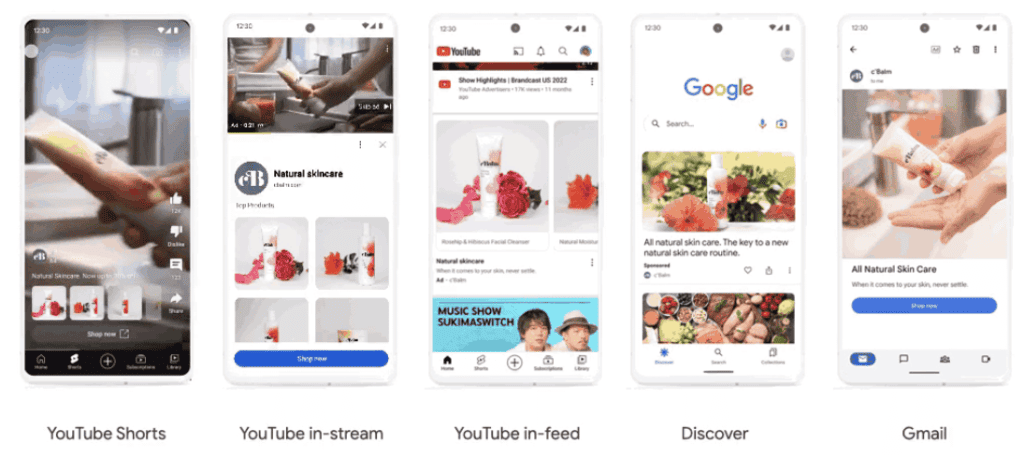This post may contain affiliate links. If you use these links to buy something we may earn a commission at no extra cost to you. Thank you for your support!
Why CTR is Important
In the digital realm, where every click is a vocal expression of your audience’s preferences, CTR stands as a vital metric that can make or break your ad campaign. But what makes it so crucial, and for what aspects of your campaign is it particularly indispensable? Furthermore, why should you need a CTR calculator?
You can be running display ads, search ads, or social media promotions like Facebook ads so understanding your average CTR is extremely important.
The good news? It’s not at all difficult to calculate! With our free CTR calculator and a formula for you – you’re all set to start working on those numbers!
Tools like Google Analytics provide real-time insights into your ad campaigns and a good click-through rate is a clear indicator that your ad copy and ad placement are relevant to your target audience.
How Does the CTR Work?
Navigating the digital marketing space requires not just creativity but also a knack for numbers. Here’s where the CTR formula comes into play, a simple yet powerful equation that holds the potential to transform your ad performance. But how does it work, and why is it so pivotal?
Breaking Down the Formula
The click-through rate formula is a straightforward one:
CTR (%) = (Total Clicks on Ad / Total Impressions) x 100.
This formula is the first step in unraveling the effectiveness of your ads. By dividing the total number of clicks by the number of impressions (the number of times your ad was displayed) and multiplying the result by 100, you get your CTR percentage.
Want it faster? Punch your numbers into the CTR calculator for instant results.
What Is A Successful CTR For Ads?
An industry standard is 0.05% – that means 1 click out of every 2000 impressions.
How Do You Increase CTRs?
Here are some ways you can use to get more clicks on your ads:
- bigger ads
- better and higher positions on the page
- mobile optimized
- attractive creatives and graphics
- dialed in offer
Role of Impressions
On the other side of the equation, we have impressions. This isn’t just about the number of times your ad is displayed; it’s about the number of times your ad has to catch a user’s eye. Even if they don’t end up clicking, each impression increases brand awareness, making it an integral part of the CTR story. One might wonder, why not just track clicks or impressions alone?
Here’s the catch: standalone, these figures can be misleading. A high number of impressions with fewer clicks can lead to a low CTR, indicating an issue with the ad’s relevance or appeal. Conversely, a high number of clicks with fewer impressions would result in a higher CTR, showcasing a highly effective ad.
The beauty of the CTR formula lies in its ability to balance these two elements, providing a more accurate picture of ad performance.
Real-Time Calculations with A CTR Calculator
In today’s fast-paced digital world, marketers don’t have the luxury of time. Manual calculations are prone to errors and can be time-consuming. This is where an online CTR calculator becomes a must-use tool. By simply inputting your clicks and impressions, these calculators provide instant, accurate results, allowing for real-time strategy adjustments.
Use our free calculator below to get your CTR rates!
Understanding the Click-Through-Rate

Click-Through Rate (CTR) refers to the ratio of users who click on a specific link or advertisement relative to the total number of users who view a page, email, or advertisement. It is expressed as a percentage, representing the proportion of audiences who take a step further from merely viewing your content or ad to clicking on it and visiting your landing pages.
At its core, CTR is a ratio of clicks to views. For instance, if your digital advertising campaign garners 1000 views and 100 click-throughs of a given advertisement, your CTR is 10%. This ratio of the number of clicks to impressions gives you direct insight into how compelling your audience finds your ad or how relevant it is to their needs or interests.
The two main components involved in calculating CTR are the total number of clicks an ad receives and the number of times the ad was displayed, known as ad impressions.
Each component is a key performance indicator, reflecting different aspects of user interaction and ad performance. While most commonly associated with digital advertising, CTR is also a relevant metric in email marketing, search engine optimization, and content marketing. For instance, in an email marketing campaign, CTR would indicate the percentage of email recipients who clicked on a link within an email, showcasing the effectiveness of your email marketing campaign and distribution strategy.
What are the Perks of Maintaining a Good CTR?
A good CTR is more than just a pat on the back; it’s a testament to the resonance of your message and the effectiveness of your strategy. To achieve a good click-through rate and meet the goal of any ad, consider analyzing the click-through rate trends, few clicks versus high clicks, and the influence of white space in your ad design. Leveraging vital metrics like CTR and Google Analytics, you can make informed decisions to ensure every click counts in the competitive digital world. Moreover, CTR is important because it is;
A Direct Measure of Audience Engagement
At its core, CTR reflects how well your audience responds to your content or ads. A high CTR indicates that a larger proportion of your audience finds your material engaging enough to take action. This isn’t just a pat on the back for good content; it’s tangible proof that your marketing efforts are resonating with the right audience.
Indicates Relevance and Effectiveness
CTR doesn’t just show if people are clicking; it’s a key indicator of whether your ads are relevant to the audience you’re reaching. A low CTR might suggest that your ad’s messaging isn’t aligned with what your audience wants or needs, or perhaps it’s not being shown to the most relevant audience segments.
Influence on Conversion Rates
Clicks are the preliminary step to conversions. A high CTR means more traffic to your landing pages, and potentially, more conversions. However, it’s crucial to remember that CTR is part of a larger journey. A high click-through rate coupled with low conversions might indicate issues with the landing page or the conversion process itself.
SEO Implications and Efficient Email Marketing
While primarily a paid advertising metric, CTR also plays a role in organic search. Search engines like Google consider user interaction when ranking websites. A high CTR indicates to search engines that your site is a valuable resource, potentially improving your organic search rankings.
In email marketing campaigns, CTR is super important for measuring recipient engagement. High open rates with low CTR could indicate that your email content isn’t compelling enough to prompt clicks, or perhaps the calls to action aren’t clear or convincing.
Why You Should Use a CTR Calculator
In an age where data drives decisions, utilizing a CTR calculator is no longer optional; it’s a necessity. This valuable tool does more than just save time; it provides precision, facilitates strategy, and could very well be the difference between a campaign’s success and failure. But what makes a click-through rate calculator indispensable?
Instant Accuracy and Efficiency
In the heat of a campaign, you need access to real-time data. A CTR calculator eliminates human error, providing instant, accurate results. Whether you’re calculating the CTR of each ad or the overall campaign, precision is key, and this online tool delivers.
With numerous tasks vying for attention, a free CTR calculator streamlines the process, allowing you to input the total number of clicks and ad impressions and receive your CTR in seconds. This efficiency means you can spend more time interpreting results and strategizing, not stuck in calculations.
Understanding Trends and Empowering Strategic Decisions
CTR isn’t static; it’s dynamic and can change throughout a campaign. Regular use of a CTR calculator helps track these trends, providing insights into how different factors like seasons, events, or market changes impact your CTR. Data is powerful, but only if you can interpret and act on it. By providing quick, accurate CTR calculations, a CTR calculator allows you to make timely, data-driven decisions. Is a low CTR indicating a need for a change in ad copy, or does a high CTR with low conversions suggest issues on the landing page? Immediate insights facilitate immediate action.
Essential Metrics for Advertisers and Publishers
In the realm of digital advertising, focusing solely on click-through rates (CTR) isn’t enough. Advertisers and publishers must consider a spectrum of metrics to fully understand their ad performance and audience behavior. Here are some key metrics that are indispensable:
Click-Through Rate (CTR): Of course, the CTR holds significant weight, showing the ratio of users who click on an ad to the number of total users who view it. It provides insights into the engagement and relevance of your ad.
Conversion Rate: Beyond clicks, how many users took a desired action? This could be making a purchase, signing up for a newsletter, or any other goal of your ad campaign. A higher conversion rate indicates effective persuasion and a high click-through rate’s impact on end goals.
Total Clicks: This is the raw count of how many user clicks your ad received. When analyzed alongside impressions, you can understand your ad’s ability to encourage users to take the next step.
Impressions: The number of impressions refers to the count of how many times your ad was displayed. While not everyone will click, every impression increases brand awareness. It’s the breadth of your ad’s reach and a fundamental element of its performance.
Cost Per Click (CPC): This metric shows how much each click costs the advertiser. It’s crucial for budgeting and understanding the financial efficiency of your ad campaigns.
Bounce Rate: A high bounce rate on your landing pages might indicate issues with user experience or the ad’s relevance. It’s a key metric to optimize to prevent low conversions.
Open Rates: In email marketing, this metric represents the percentage of email recipients who open your email. It’s a reflection of your email marketing campaign’s ability to capture attention and compel further action.
Putting CTR into Action

Understanding your click-through rate and other essential metrics is a critical first step. However, the real value lies in the action you take based on these insights. Here are a few ways to leverage your CTR for digital marketing success:
Ad Placement: Are your ads positioned effectively? If you find that an ad in a particular location garners a high CTR, consider allocating more resources to that space. Strategic placement can significantly impact the success of your ads.
Ad Copy and Design Optimization: If you notice a low CTR, it’s time to revisit your ad copy, images, and overall design. Ensure they align with your target market and are compelling enough to drive clicks.
Keywords and Targeting: Assess whether the keywords you’re using are relevant to your target audience. Fine-tuning your keyword strategy can lead to more accurate ad placements and, consequently, a higher CTR.
Continuous Testing and Improvement: Digital marketing is an ever-evolving landscape. Regularly test variations of your ads to see what resonates best with your audience. A/B testing can be a powerful tool to determine what works and what doesn’t.
User Experience: Dive into your bounce rate and conversion rate data. A high CTR is only valuable if it leads to conversions. Optimizing your landing pages for a seamless user experience can bridge the gap between a click and a conversion.
In Conclusion
CTR isn’t just a metric; it’s the lifeline of your digital marketing campaigns. It’s the compass that guides your advertising efforts, helping you reach the right audience, prompt the desired action, and ultimately drive business success. A high CTR is more than a pat on the back; it’s a testament to the resonance of your message and the effectiveness of your strategy.
In this dynamic digital landscape, a click-through rate calculator is more than a valuable tool; it’s an indispensable ally. Thanks to the power of online CTR calculators, you can harness the full potential of your digital marketing campaigns, secure in the knowledge that every decision is grounded in precision. Your journey to digital success starts here, with CTR leading the way. So, take the first step, explore the countless possibilities, and ensure that every click counts, because in the end, it’s your CTR that leads the way to success in the digital world.





